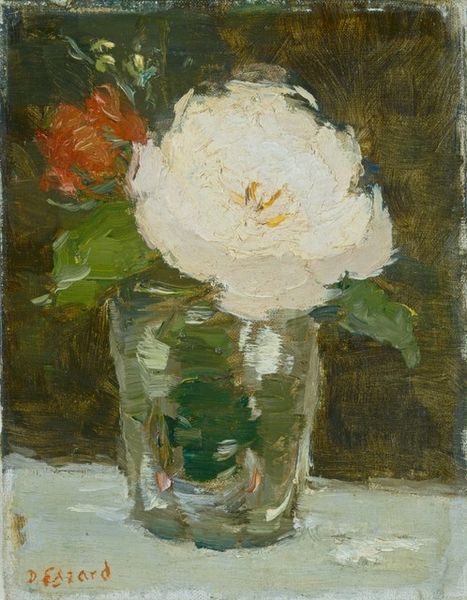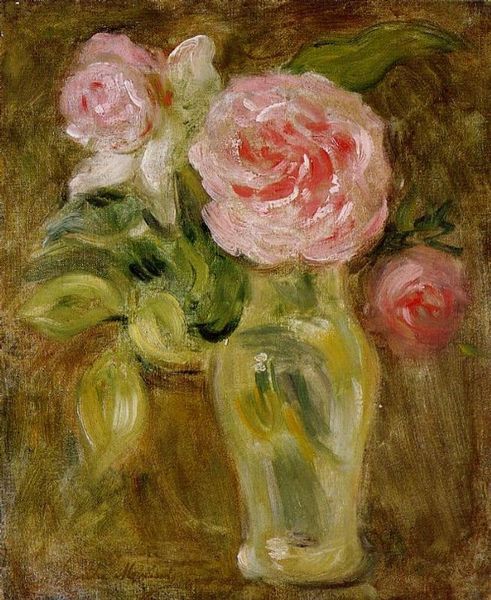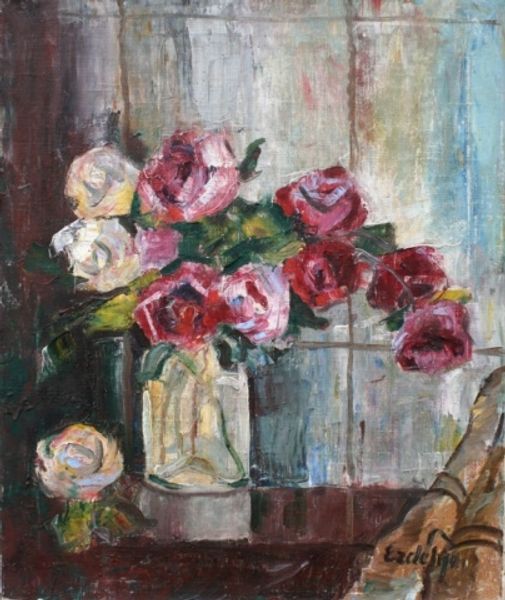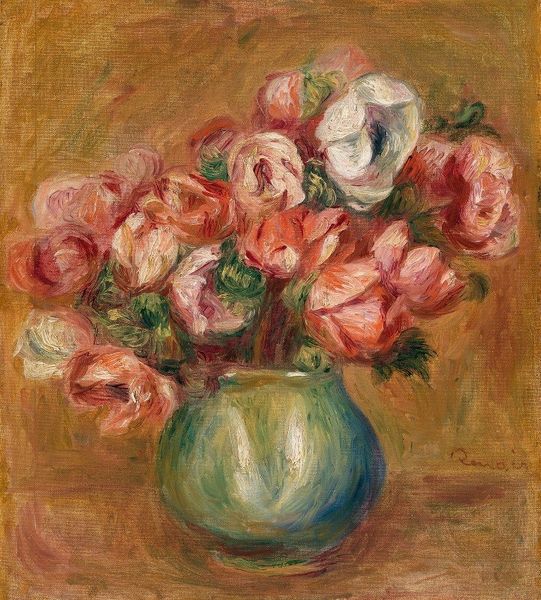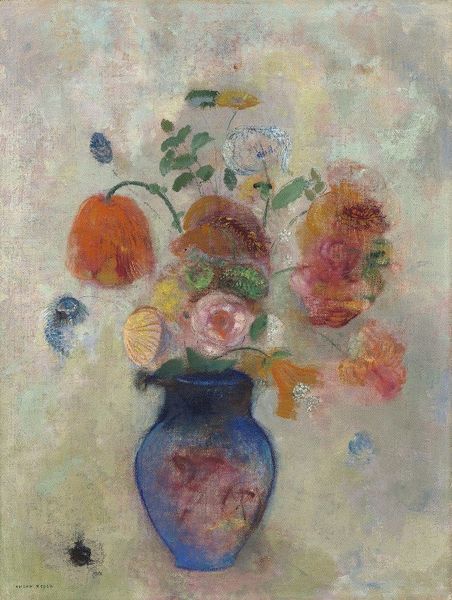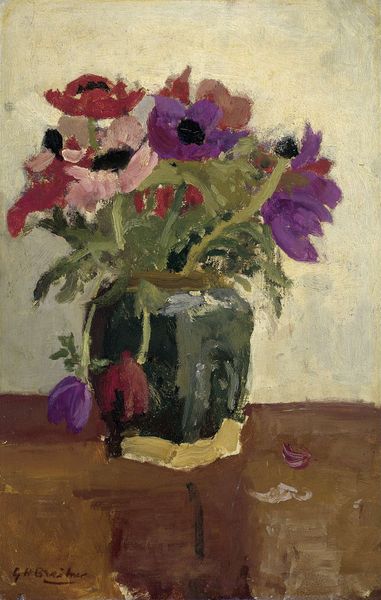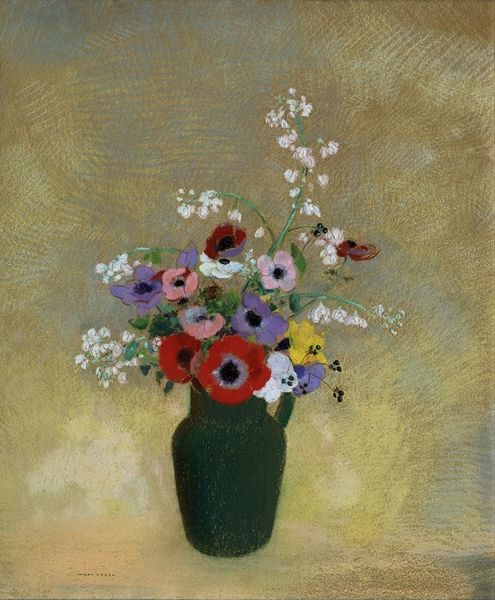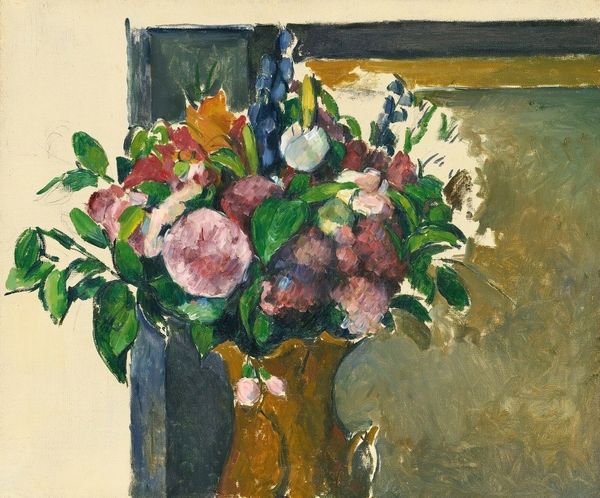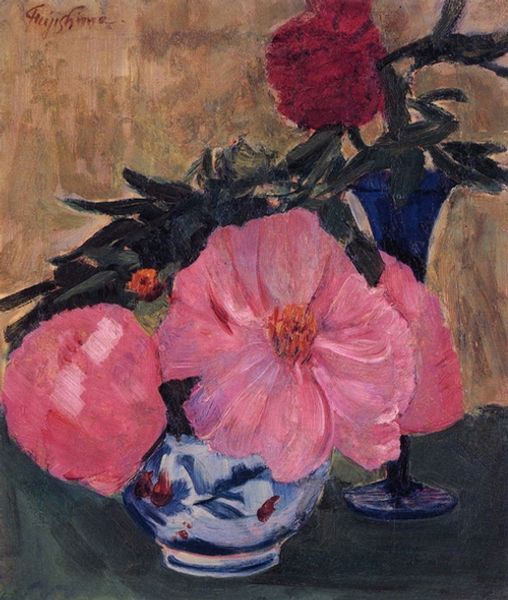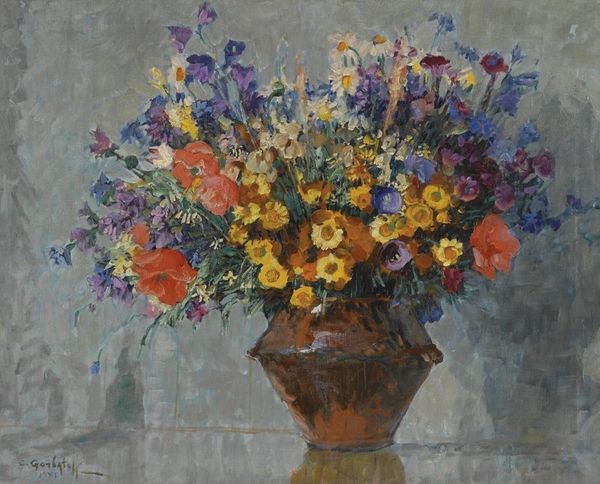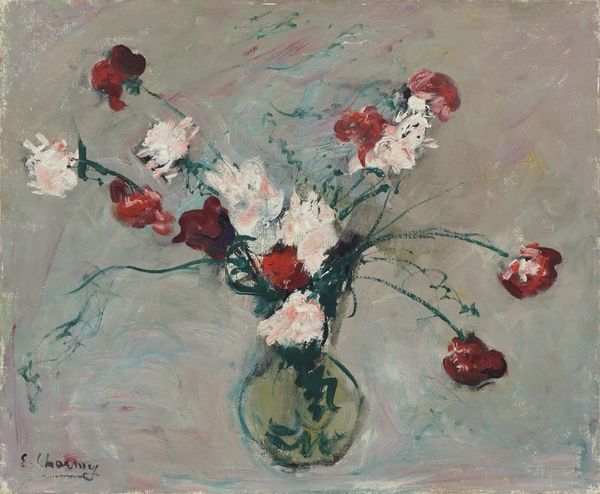
painting, plein-air, oil-paint, impasto
#
portrait
#
water colours
#
painting
#
impressionism
#
plein-air
#
oil-paint
#
oil painting
#
impasto
#
modernism
#
watercolor
Dimensions: overall: 18 x 14.2 cm (7 1/16 x 5 9/16 in.) framed: 33 x 29.2 x 4.4 cm (13 x 11 1/2 x 1 3/4 in.)
Copyright: National Gallery of Art: CC0 1.0
Curator: First impression? Soft, blurry at the edges like a faded memory. Makes you wonder, what’s it holding on to? Editor: Well, let's not rush to conclusions! We’re looking at “Flowers in a Vase,” painted with obvious delight by Dietz Edzard. No date’s attached, so we’ll need to situate the work within his oeuvre. Edzard was a German artist whose work dances between impressionism and a certain modernist verve, playing with oil paint and occasionally even watercolors, and he clearly loved impasto! Curator: Impasto indeed! The textures are alive. Almost edible, aren’t they? Makes you want to just reach out and swirl your fingers through those thick petals. But back to that fading memory thing... it's almost like these aren't flowers as such, more the essence of “flowerness." Like he’s distilling the very idea of spring itself. Editor: That’s a very poetic, ahistorical reading. It is vital to recognise that depictions of flowers throughout art history are inextricably linked to gender. From ancient Greece to the Victorian era, women were frequently depicted as objects of decoration, not unlike a still life composition of flowers, displayed for their aesthetic appeal. While I see the beauty here, I can't ignore the patriarchal dimensions inherent to this art tradition. Curator: Whoa, okay, dial it back a notch, I hear you but is every lovely little posy secretly some grand oppressive scheme? I appreciate the feminist reading. It's really making me think, even if it feels like I’m being scolded. All the same, isn't there a possibility to simply embrace it as a fleeting moment of beauty, rather than forcing a narrative? Maybe these were just some pretty flowers on a table? Editor: The personal is political! And our perceptions are always shaped by culture. We need to analyse the social narratives. These flowers are objects and the history of art has very gendered meanings assigned to who owns these objects or who can look and who creates. Curator: Well, thanks to you, it certainly gives me a fresh perspective to consider next time I impulsively purchase a bouquet! Editor: Precisely! Now you can enjoy them with both aesthetic pleasure and critical awareness.
Comments
No comments
Be the first to comment and join the conversation on the ultimate creative platform.
